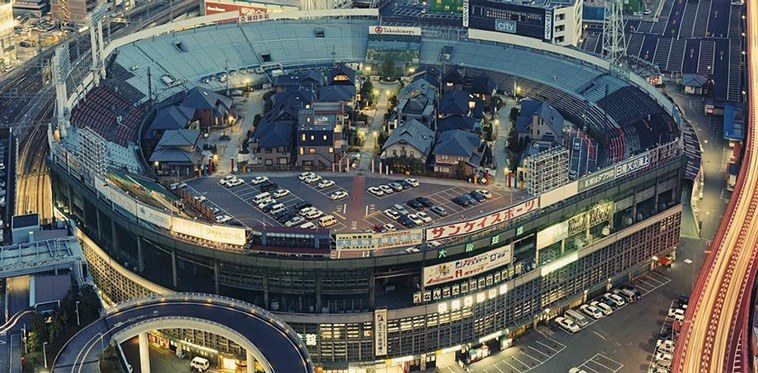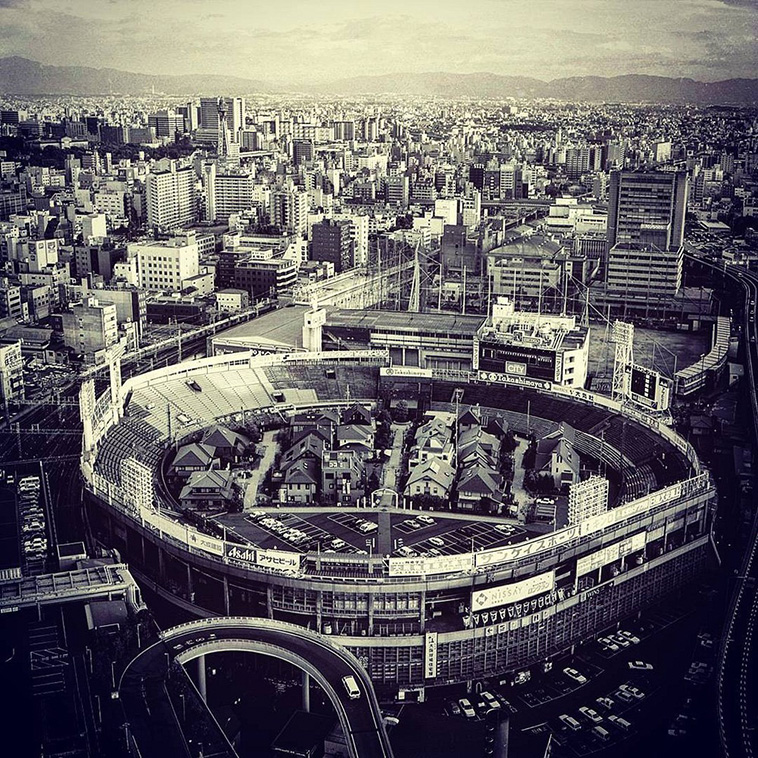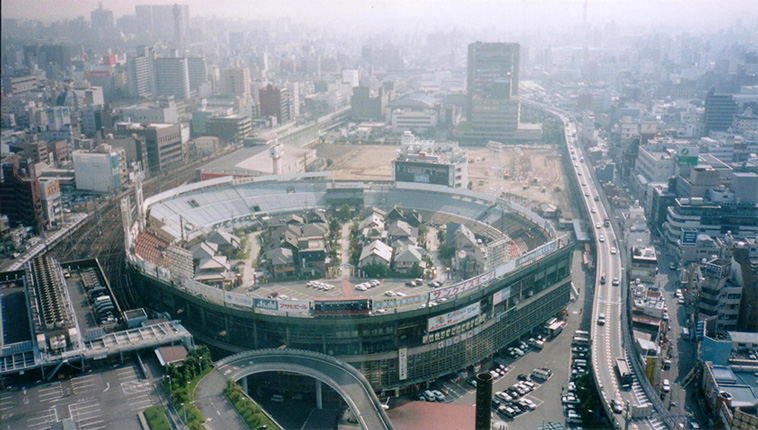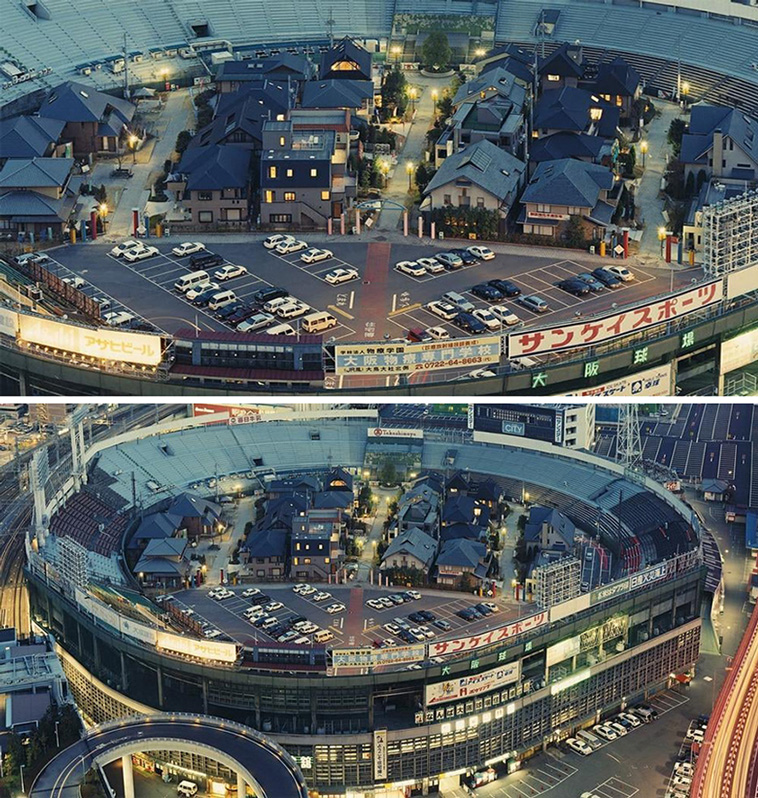Once the proud home of the Nankai Hawks baseball team, Osaka Stadium in Japan underwent a significant transformation after the Hawks relocated to a new venue.
Following their departure in 1988 to Heiwadai Stadium, the city of Osaka repurposed the stadium into an outdoor display area for model homes. Initially opened in 1950 with a seating capacity of 32,000, the stadium witnessed decades of thrilling baseball matches until its abandonment. Subsequently, the former baseball field found new life as the venue for the “Namba Osaka Stadium Housing Fair,” showcasing various model homes to the public.
The metamorphosis of Osaka Stadium was nothing short of extraordinary; it evolved into a quaint residential enclave complete with artificial streets, illuminated street lights, and parked cars adorning the homes’ exteriors.

Gone were the days of baseball matches and cheering crowds; instead, the stadium’s interior was adorned with meticulously crafted model homes, complete with faux streets, street lights, and parked cars. Visitors were invited to explore these immersive displays, gaining insight into the future of residential architecture.


In 1991, a trade group seized the opportunity to lease the venue, transforming it into a captivating showcase of model homes from multiple construction companies. The expansive playing arena underwent a remarkable metamorphosis, morphing into a miniature residential neighborhood. Artificial streets, complete with street lights and parked cars, lent an air of authenticity to the scene. Rows of houses stood neatly arranged, with lights strategically illuminated to create the illusion of occupancy.

However, the stadium’s chapter eventually came to a close, making way for progress. Today, a bustling shopping center stands in place of the once-iconic stadium and its innovative showroom.

Though the era of the Nankai Hawks had come to an end, Osaka Stadium’s legacy lived on through its transformation. The fair served as a testament to the city’s resilience and adaptability, demonstrating its willingness to embrace change and reimagine urban spaces. Ultimately, the stadium made way for new developments, symbolizing the city’s ongoing evolution and commitment to progress.